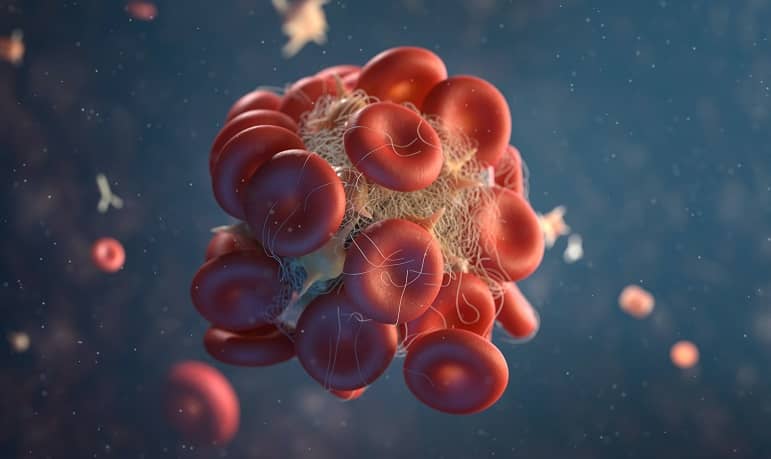In patients with gout, a temporary increase in the number of venous thromboembolisms (VTEs) was seen in the first 30 days after a gout attack.
Previous research has shown that the VTE risk is increased in patients with gout. However, it is not known whether there is a temporal association between gout attacks and VTE risk. English researchers obtained data from the UK’s Clinical Practice Research Datalink. Using self-controlled case series analysis, adjusted for season and age, temporal associations between gout attacks and VTE were assessed. The 90 days after a consultation with the GP or a hospital admission for a gout attack were designated as the ‘exposure period’. This was divided into 3 intervals of 30 days. The reference period was the period up to 2 years before the start of and up to 2 years after the end of the exposure period. The association between gout flare and VTE was measured using adjusted incidence rate ratios (IRRs) with 95% confidence intervals (95% CIs).
314 patients met the inclusion criteria (age ≥ 18 years, gout, no VTE or use of anticoagulation). In this group, the incidence of VTE was significantly higher during the exposure period than in the reference period (adjusted IRR 1.83; 95% CI 1.30-2.59). The adjusted IRR of VTE during the first 30 days after a gout attack was 2.31 (95% CI 1.39-3.82) compared to the reference period. No increase in VTE risk was observed during days 31-60 (adjusted IRR 1.49; 95% CI 0.79-2.81) and days 61-90 (adjusted IRR 1.67; 95% CI 0.91-3.06) compared to the reference period.
Bron:
Cipolletta E, Father LJ, Nakafero G, et al. Risk of Venous Thromboembolism With Gout Flares. Arthritis Rheumatol. 2023 Feb 20. Online ahead of print.
2023-10-16 07:09:36
#Risk #venous #thromboembolism #temporarily #increased #gout #attack #MedNet


